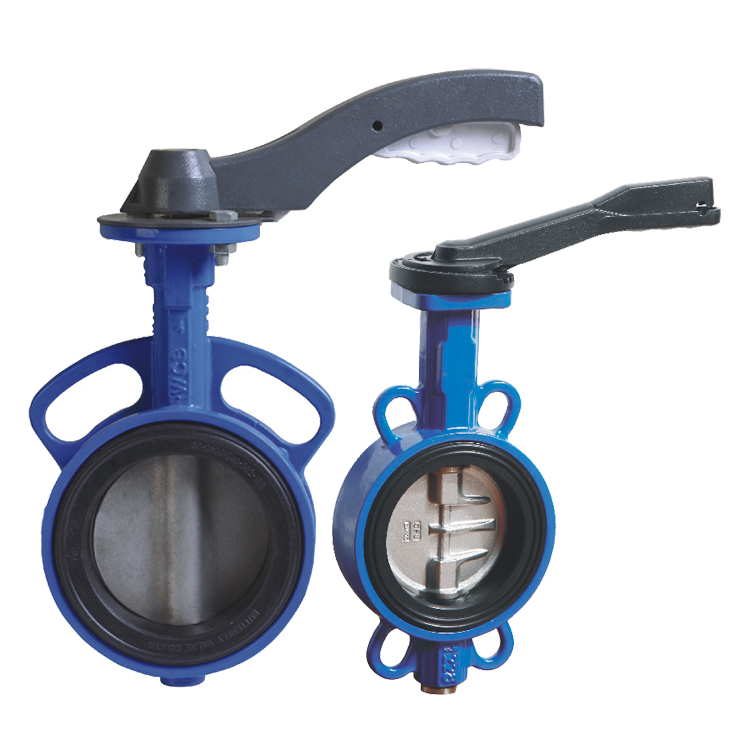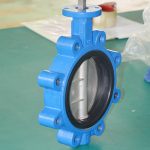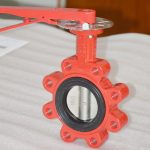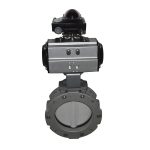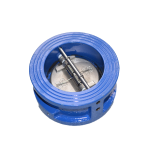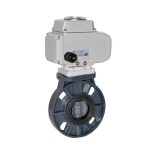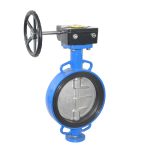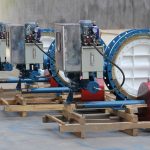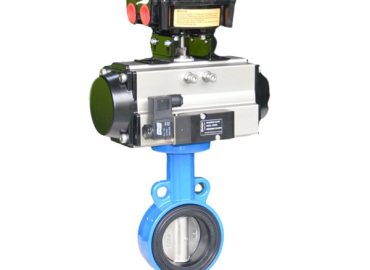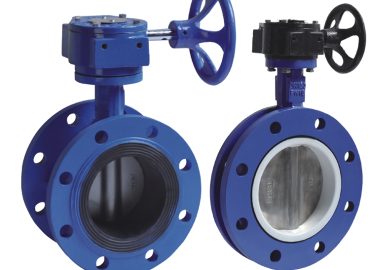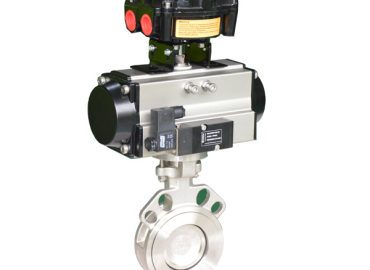Valves play a critical role in various industrial applications as they control the flow of fluids through pipes and pipelines. Different types of valves are available, with varying strengths and limitations regarding their functionality, installation and maintenance costs, and efficiency. Wafer body butterfly valves are among the most common valves used in industrial settings; they offer significant advantages over other types of valves, including low cost of installation and maintenance, efficient flow control, and space-saving design. In this blog post, we will explore in-depth the benefits of using wafer body butterfly valves over other types of valves, their operation, applications, and installation and maintenance considerations.
Introduction
Wafer butterfly valve offer several benefits in industrial applications compared to other types of valves. They are less expensive to install and maintain and have a space-saving design that makes them ideal for use in tight spaces. Wafer butterfly valves have efficient flow control, thanks to their quarter-turn operation, which allows for quick shut-off and precise flow modulation. They also have low pressure drops, reducing energy consumption and increasing efficiency. Because of these benefits, wafer body butterfly valves are widely used in the chemical processing, pharmaceutical, water treatment, pulp and paper, and HVAC industries.
Explanation of butterfly valves and their importance in industrial applications
Butterfly valves are quarter-turn valves that control fluid flow within a pipeline. The valve’s control mechanism is a rotating disc or wing that pivots on its axis to regulate or stop the fluid flow. Butterfly valves come in different types, each suitable for specific industrial applications. But what sets butterfly valves apart from other valves is their high flow coefficient, low cost, and light weight, making them ideal for use in different settings. Due to their ease of use, reliable performance, and low cost, butterfly valves are commonly used in various applications, including building systems, water distribution systems, food processing, wastewater treatment, and HVAC systems.
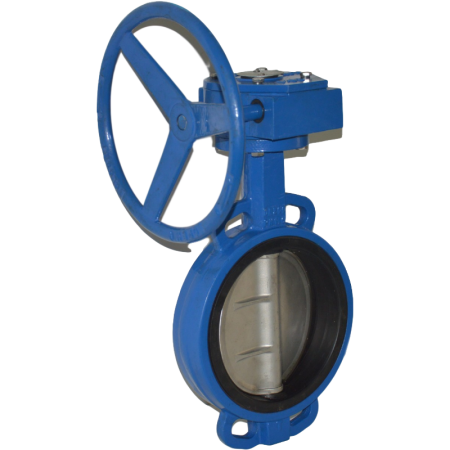
Brief overview of wafer body butterfly valves and their benefits
Wafer body butterfly valves are a subtype of butterfly valves featuring a thin wafer design that fits snugly between the pipeline flanges. This wafer design eliminates the need for additional flanges, reducing installation and maintenance costs. As we previously mentioned, wafer body butterfly valves offer several benefits, including efficient flow control, low pressure drop, low cost of installation and maintenance, and a space-saving design. These valves are commonly used in a range of industrial applications like HVAC systems, chemical processing, and water treatment. The next sections of this blog post will provide a more detailed discussion of the advantages of wafer body butterfly valves individually.
Benefits of wafer body butterfly valves
Pneumatic butterfly valve offer several benefits to industrial applications that make them stand out from other valve types. The slim design of the valve helps in providing an efficient flow of fluids through the pipeline, which leads to the efficient operation of industrial equipment. The valves are also cost-effective, both in terms of installation and maintenance due to their low weight and the fact that they don’t require additional flanges. Additionally, wafer body butterfly valves have a lower pressure drop than other valve types, which translates into reduced energy consumption and increased efficiency. They are suitable for use in a variety of industries, including chemical processing, HVAC systems, and water treatment plants, among others.
Lower cost and weight compared to other valves
Wafer body butterfly valves are a cost-effective alternative to other valve types due to their simple design and manufacturing process. Their lightweight and compact design make them less expensive to transport, install, and maintain than other valve types. Additionally, their wafer-style construction eliminates the need for flanges, reducing both material and labor costs. This cost-effectiveness makes wafer body butterfly valves an ideal option for organizations seeking to keep their operating costs low while maintaining optimal system performance.
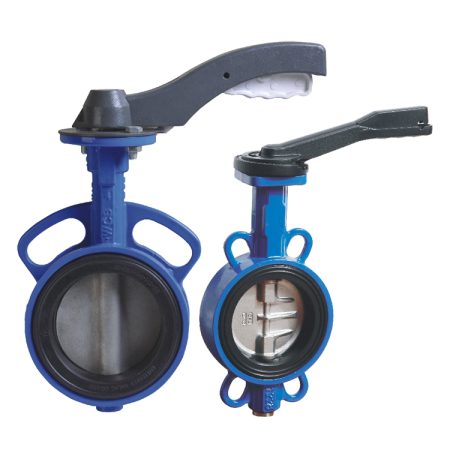
Easier installation and maintenance due to adaptable design
Wafer body butterfly valves have an adaptable design that makes them easier to install and maintain compared to other valve types. Their compact and lightweight design makes them practical to handle during installation or removal activities. Their straightforward design also means that they require fewer parts, allowing for easier maintenance and reduced downtime. Due to their wafer-style construction, these valves require fewer bolts and gaskets, which simplifies the installation and maintenance process further. This adaptable design reduces the time and effort required to install and maintain wafer body butterfly valves, making them a great option for organizations seeking to minimize downtime and increase productivity.
Space-saving design ideal for systems with size constraints
The space-saving design of wafer body butterfly valves makes them an excellent option for systems with size constraints. Unlike other valve types that require additional space for installation, the wafer body butterfly valve fits snugly between two pipeline flanges, thereby significantly reducing the required installation space. This makes them a perfect option for industrial applications where space is limited or costly. Additionally, their compact design allows for easy integration into existing systems without the need for significant modifications, making them a cost-effective and practical solution for installation in pre-existing systems. This attribute makes wafer body butterfly valves an attractive option for systems with limited space and ensures the continuity of operations while maintaining the ideal flow and control of fluids.
Efficient flow control and accurate position sensing
Efficient flow control and accurate position sensing are essential for the smooth operation of industrial systems. Wafer body butterfly valves offer both of these benefits. These valves feature a streamlined disc that rotates within the pipeline to control fluid flow accurately. Their quarter-turn rotation action allows for quick shut-off and precise flow modulation, making them ideal for applications that require fine-tuning of fluid flow. Additionally, wafer body butterfly valves have an accurate position sensing system that provides real-time feedback on the valve’s position, ensuring precise control of fluid flows. This level of control ensures that industrial equipment functions optimally and consistently, leading to reliable system performance, and prevents excess energy consumption.
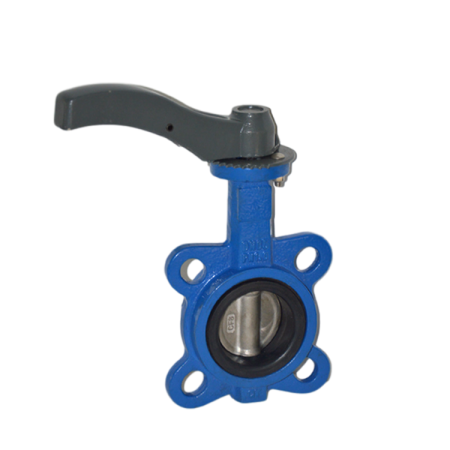
Comparison to other types of valves
Wafer body butterfly valves offer several distinct advantages over other types of valves. Compared to gate valves, which have higher installation and maintenance costs, wafer body butterfly valves are more cost-effective, and their lightweight design means that they require fewer support structures. Additionally, gate valves are slow to operate, which may not be suitable for applications requiring precise control of fluid flow. Similarly, compared to ball valves, which require additional space for installation, wafer body butterfly valves’ slim design saves space and reduces the cost of materials and labor. Furthermore, globe valves have a higher pressure drop than wafer body butterfly valves, which results in increased energy consumption and inefficiency. Overall, wafer body butterfly valves offer a reliable, efficient, and cost-effective solution for controlling fluid flow in industrial applications.
Comparison of wafer body butterfly valves to gate valves, ball valves, and globe valves
Wafer body butterfly valves provide significant benefits compared to gate valves, ball valves, and globe valves in industrial applications. Gate valves have higher installation and maintenance costs, while wafer body butterfly valves are more cost-effective and require fewer support structures. Ball valves require more installation space than wafer body butterfly valves, which have a slim design that saves space and reduces costs. Globe valves have higher pressure drops, increasing energy consumption and inefficiency, unlike wafer body butterfly valves, which have a low pressure drop. Additionally, wafer body butterfly valves have a high flow coefficient, which makes them ideal for applications that require precise control of fluid flow, unlike gate valves, which are slower to operate. Overall, wafer body butterfly valves provide a reliable, efficient, and cost-effective solution for controlling fluid flow in different industrial applications compared to other valve types.
Benefits of wafer body butterfly valves over other types of valves for specific applications
Wafer body butterfly valves provide several benefits over other types of valves in different applications. In HVAC systems, wafer body butterfly valves are compact, require fewer support structures, and offer precise control of water flow, making them ideal for use in systems with limited space that require accurate temperature control. In chemical processing applications, wafer body butterfly valves have a low pressure drop and offer precise control of chemical flow, while gate valves, which are slower to operate, may not be suitable for precise applications. In the food and beverage industry, wafer body butterfly valves are easy to install and maintain, require fewer gaskets and bolts, and have a hygienic design, making them ideal for food-grade applications. Overall, wafer body butterfly valves offer significant advantages in specific applications, making them a practical and cost-effective solution for various industries.
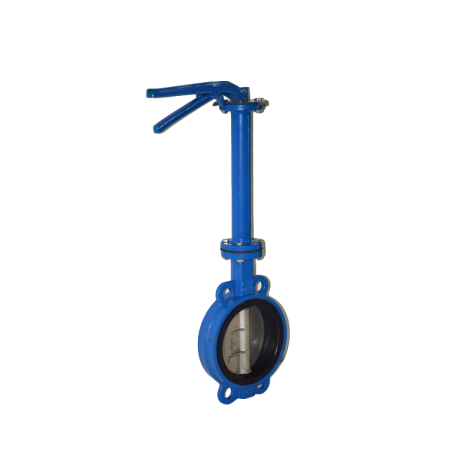
Examples of industries that commonly use wafer body butterfly valves
Wafer body butterfly valves are widely used in several industries due to their compact design, efficient flow control, and cost-effectiveness. They are commonly used in HVAC systems to regulate water flow in heating and cooling systems. In the chemical processing industry, where precise control of fluid flow is necessary, wafer body butterfly valves are an excellent option. They are also popular in the food and beverage industry due to their hygienic design and ease of maintenance. Additionally, wafer body butterfly valves are used in the water treatment industry due to their low pressure drop and accurate position sensing. These valves have various applications in other industries, including pharmaceuticals, petrochemicals, and power generation.
Differences in operation, installation, and maintenance compared to other types of valves
Wafer body butterfly valves operate differently than other types of valves due to their unique design. Instead of a linear motion operated by a stem, wafer body butterfly valves employ a quarter-turn motion to rotate the disc 90 degrees and control fluid flow. Operationally, this makes them faster and more responsive than gate valves, ball valves, and globe valves, which all have linear motion. During installation and maintenance, wafer body butterfly valves are more straightforward and require fewer parts, making them easier and quicker to install and maintain. For example, unlike globe valves, which require horizontal support to prevent the valve stem from bending, wafer body butterfly valves require only vertical support. Additionally, ball valves have more significant installation space requirements, whereas wafer body butterfly valves’ slim design saves space and reduces installation costs. Lastly, wafer body butterfly valves have a simple design with fewer parts, reducing maintenance needs and downtime costs compared to other valve types.
Considerations for selecting and installing a wafer body butterfly valve
When selecting and installing a wafer body butterfly valve, there are several considerations to keep in mind. First, it is essential to select the correct valve size and material to ensure it can handle the required flow rate and pressure of the application. It is also necessary to verify that the valve’s wafer body style conforms to the flange standards of the pipeline. Additionally, consideration should be given to the valve disc material, which should not react with fluid, ensuring smooth and efficient flow control. When installing the valve, it is crucial to ensure that the pipeline flanges are parallel and aligned correctly to the valve to prevent leaks from occurring. Finally, regular maintenance such as cleaning and inspections should be performed to ensure the valve works correctly and efficiently. Proper selection, installation, and maintenance of wafer body butterfly valves ensure years of reliable operation and efficient flow control in industrial applications.
Factors to consider when choosing the right wafer body butterfly valve for your system
When selecting the right wafer body butterfly valve for your system, there are several crucial factors to consider. First, consider the required flow rate and pressure of your application to ensure that the valve size and material can handle the fluid volume and pressure. Additionally, the valve’s disc material should be compatible with the fluid and operating conditions to ensure smooth operation and prevent corrosion. Other factors to consider include the operating temperature range, the need for bi-directional flow capability, and the desired level of control over fluid flow. You should also consider the quality and reputation of the manufacturer, warranty, and technical support when choosing a valve. Ultimately, the right wafer body butterfly valve for your system should meet your specific operational needs and provide efficient and cost-effective fluid flow control.
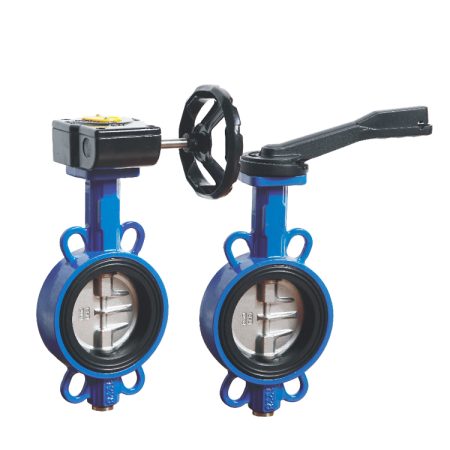
Proper installation procedures for optimal valve performance
Proper installation procedures are crucial to achieve optimal performance from a wafer body butterfly valve. First, inspect the valve for any visual damages or defects before installation. Ensure that the valve and pipeline flanges are compatible and that the flanges are perfectly aligned before positioning the valve between them. Apply the correct torque while tightening the bolts gradually in a star-shaped pattern. Excess torque can cause gasket deformation and leaks, while insufficient torque can cause flanges to loosen, leading to valve damage. After tightening the bolts, bisect the shaft position to ensure that the disc is perpendicular to the pipeline. Finally, fully open and close the valve several times after installation to confirm its proper functioning. Proper installation of wafer body butterfly valves ensures efficient and reliable flow control while minimizing both installation and maintenance costs.
Routine maintenance to ensure proper operation and longevity
Routine maintenance is critical to ensure the proper operation and longevity of wafer body butterfly valves. To start, regularly inspect the valve for any signs of leaking, corrosion, or damage. Additionally, check the valve’s position feedback system and any control accessories like an actuator to confirm that they’re working correctly. Clean the valve regularly, as buildup or debris inside the valve can cause blockages and hinder its functionality. If needed, replace any damaged or worn-out parts promptly to prevent further damage. Finally, lubricate the valve regularly to ensure smooth operation. Proper maintenance prolongs the valve’s lifespan and ensures efficient fluid flow and control, leading to reduced downtime and overall system costs.
Conclusion
In conclusion, wafer body butterfly valves offer numerous benefits over other types of valves. From their efficient flow control to their cost-effectiveness, they provide practical solutions to different industrial applications. Compared to gate valves, ball valves, and globe valves, wafer body butterfly valves have a unique design that provides fast and accurate flow control, low pressure drop, hygienic design, and space-saving benefits that make them ideal for use in various industries.
When choosing the right wafer body butterfly valve for your system, there are several essential factors to consider, including size, material, flow rate, pressure, disc material, bi-directional flow capability, and desired flow control level. Manufacturers’ reputation, warranty, and technical support are also crucial considerations when selecting a valve.
Once you’ve selected the right valve, proper installation and maintenance are essential to ensure efficient and reliable flow control while minimizing both installation and maintenance costs. During installation, inspect the valve for any visual damages or defects, align flanges before inserting the valve, apply the correct torque while tightening bolts gradually, ensure that the disc is perpendicular to the pipeline, and open and close the valve to confirm proper functioning. For maintenance, inspect for leaks or damages, confirm proper functioning of control accessories, clean the valve, replace worn-out parts promptly, and lubricate the valve regularly.
Indeed, the benefits of a wafer body butterfly valve far outweigh other types of valves’ advantages. By providing efficient flow control, cost-effectiveness, low pressure drop, hygienic design, and space-saving benefits, these valves have become popular in various industries. Through proper selection, installation, and maintenance, your wafer body butterfly valve is guaranteed to provide long-lasting and efficient performance in your industrial application.
Recap of the benefits of wafer body butterfly valves over other types of valves
In brief, wafer body butterfly valves offer numerous benefits over other types of valves in different applications. They provide efficient flow control, low pressure drop, hygienic design, and space-saving advantages, making them ideal for use in various industries. Compared to gate valves, ball valves, and globe valves, wafer body butterfly valves have a quarter-turn motion that provides fast and accurate flow control, require fewer support structures, save installation space and reduce costs. This makes them more practical for precise applications that require accurate fluid flow control. If you’re looking to optimize your system’s efficiency and reduce costs, consider wafer body butterfly valves for your industrial application.
Importance of selecting the right valve for your system and proper installation and maintenance procedures
Selecting the right valve for your system and following proper installation and maintenance procedures are crucial for achieving optimal performance and longevity. Choosing the wrong valve size or material may result in failure to handle the required flow rate and pressure, while selecting a valve with incompatible disc material can result in corrosion and leaks. Proper installation procedures, such as ensuring perfect alignment of flanges, applying the correct torque, and confirming the perpendicular positioning of the disc, prevents leaks, damage, and costly repairs. Finally, following a routine maintenance schedule, including inspection for any signs of leaks, damages or corrosion, replacing worn-out parts, and lubricating the valve, ensures the valve works efficiently and lasts long. These practices significantly reduce system downtime and maintenance costs while optimizing valve performance, providing cost-efficient and reliable fluid flow control for different industries.
Final thoughts and recommendations
In conclusion, wafer body butterfly valves are efficient, reliable, and cost-effective solutions for fluid flow control in different industrial applications. When selecting a valve, it is essential to consider critical factors such as size, material, flow rate, pressure, disc material, and control accessories. Once a valve has been selected, proper installation and maintenance are necessary to ensure efficient performance, minimize downtime, and extend longevity. Routine inspections, cleaning, and replacing worn-out parts are important maintenance tasks that need attention to ensure proper valve function. Overall, proper selection, installation, and maintenance of wafer body butterfly valves provide efficient and cost-effective fluid flow control, leading to reduced system downtime, maintenance costs, and improved industrial processes. We highly recommend investing in wafer body butterfly valves to meet your industry’s fluid flow control needs efficiently and reliably.


